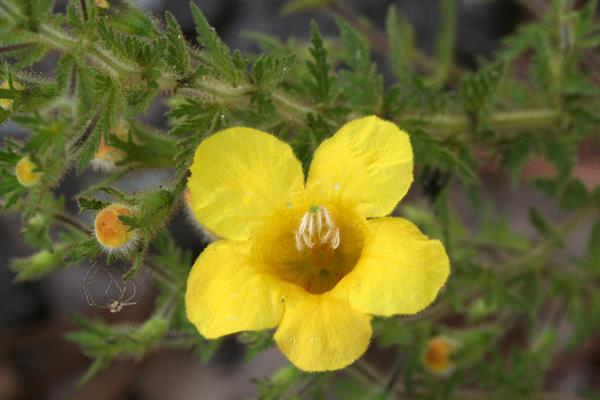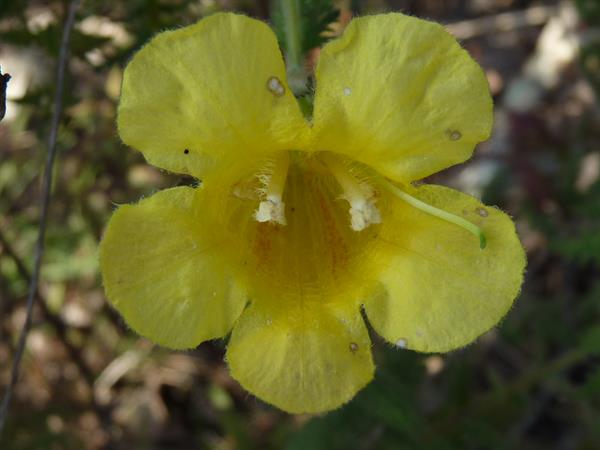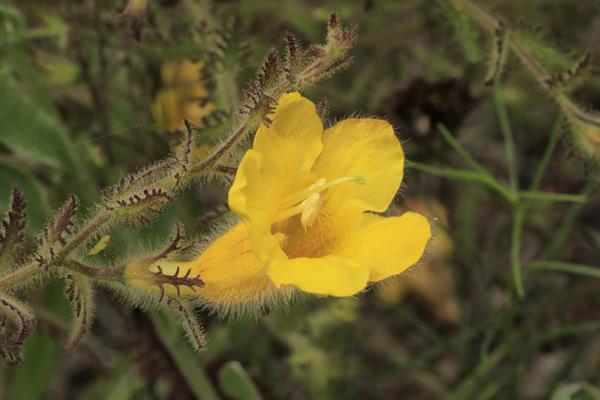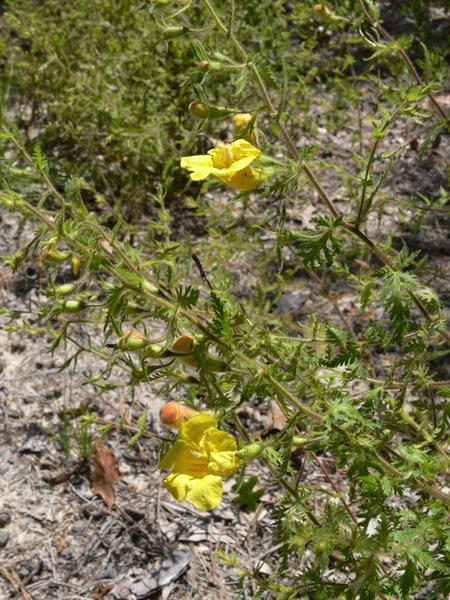
Origin/Endemic status: Endemic
Taxonomy Comments: Related to A. pedicularia, but much more southerly in overall distribution.
Synonymy: = Ar, Fl7, FNA17, K1, K3, K4, RAB, Tn, Tx, WH3; = Aureolaria pedicularia (L.) Raf. ex Pennell var. pectinata (Nutt.) Gleason – C, G; = Gerardia pectinata (Nutt.) Benth. – F; > Aureolaria pectinata (Nutt.) Pennell ssp. eurycarpa (Pennell) Pennell – S, Pennell (1935); > Aureolaria pectinata (Nutt.) Pennell ssp. floridana Pennell – Pennell (1935); > Aureolaria pectinata (Nutt.) Pennell ssp. pectinata – S; > Aureolaria pectinata (Nutt.) Pennell ssp. transcedens (Pennell) Pennell – S, Pennell (1935); > Aureolaria pectinata (Nutt.) Pennell ssp. typica – Pennell (1935); < Aureolaria pedicularia (L.) Raf. ex Pennell – W
Heliophily: 8
Hover over a shape, letter, icon, or arrow on the map for definition or see the legend.
 © Will Stuart | Original Image ⭷
© Will Stuart | Original Image ⭷ © Richard & Teresa Ware CC-BY-NC, permission granted to NCBG | Original Image ⭷
© Richard & Teresa Ware CC-BY-NC, permission granted to NCBG | Original Image ⭷ © Richard & Teresa Ware CC-BY-NC, permission granted to NCBG | Original Image ⭷
© Richard & Teresa Ware CC-BY-NC, permission granted to NCBG | Original Image ⭷ © Alan Cressler: Aureolaria pectinata, Fall Line Sandhills, Taylor County, Georgia 2 by Alan Cressler source | Original Image ⭷
© Alan Cressler: Aureolaria pectinata, Fall Line Sandhills, Taylor County, Georgia 2 by Alan Cressler source | Original Image ⭷ © Bruce A. Sorrie | Original Image ⭷
© Bruce A. Sorrie | Original Image ⭷ © Radford, Ahles and Bell | Original Image ⭷
© Radford, Ahles and Bell | Original Image ⭷Feedback
See something wrong or missing on about Aureolaria pectinata? Let us know here: (Please include your name and email if at all complicated so we can clarify if needed.)
Cite as...